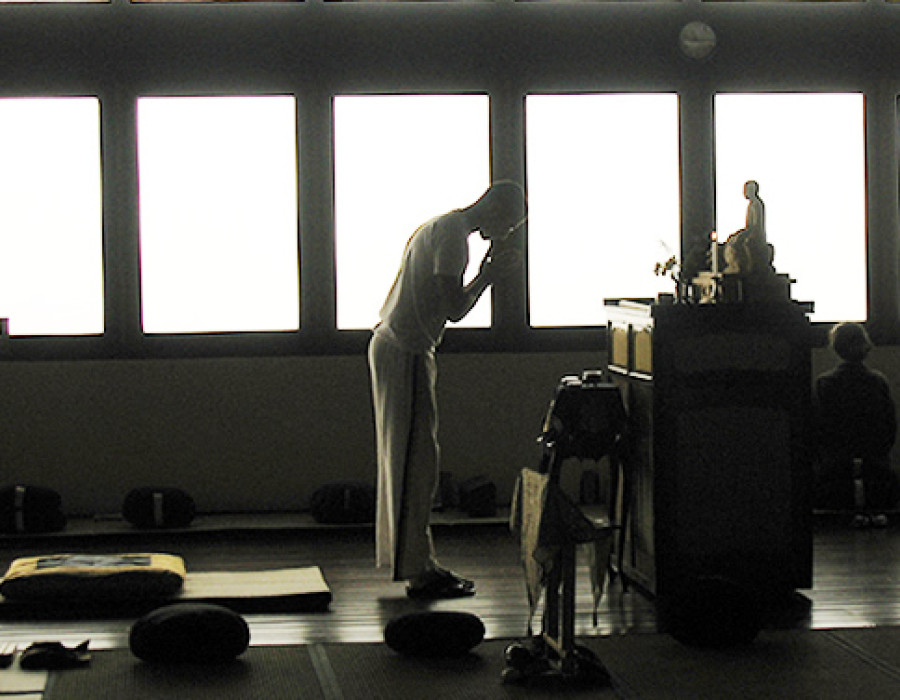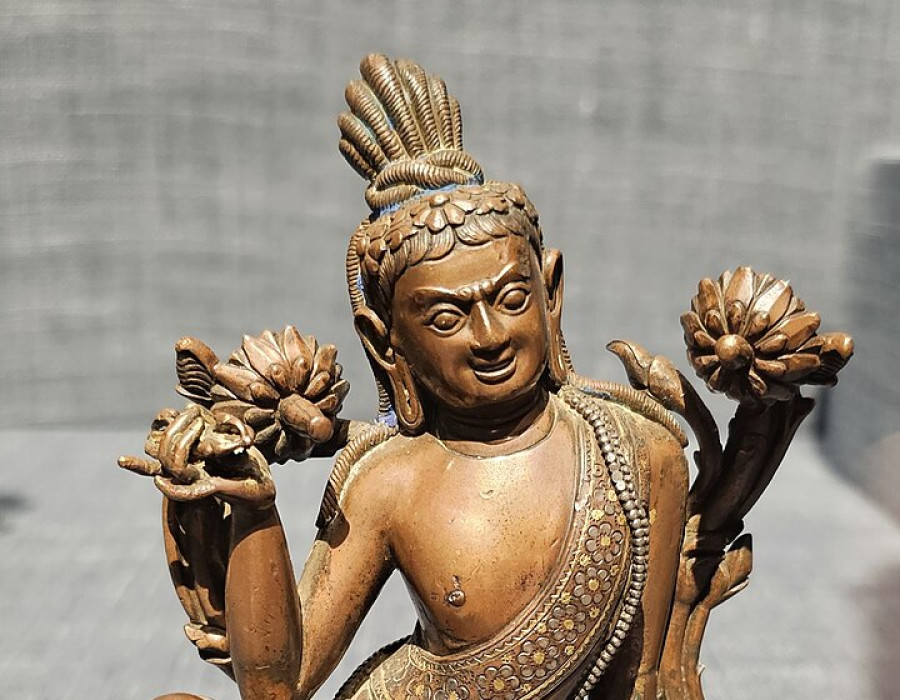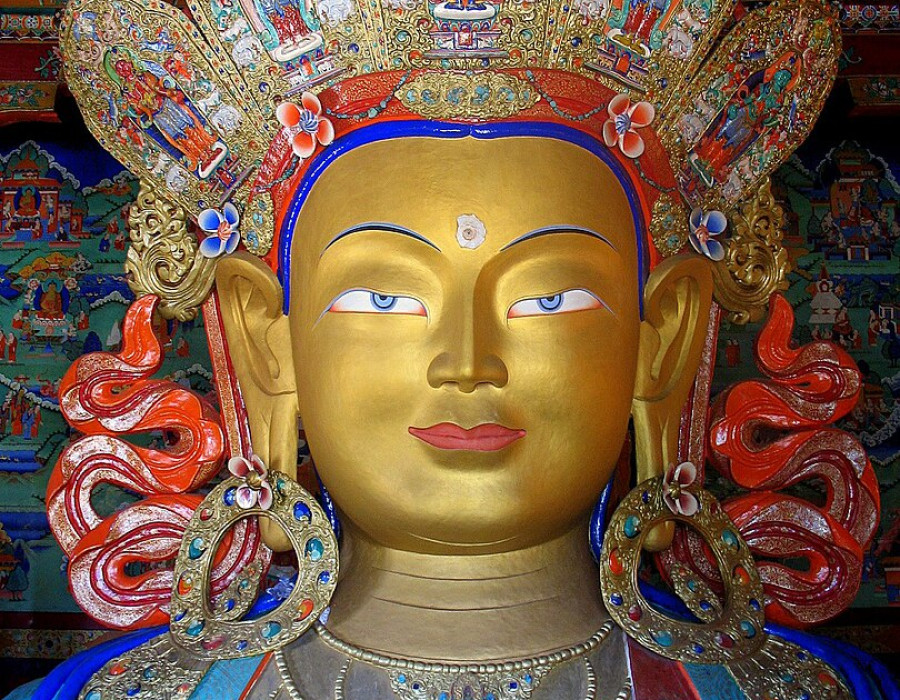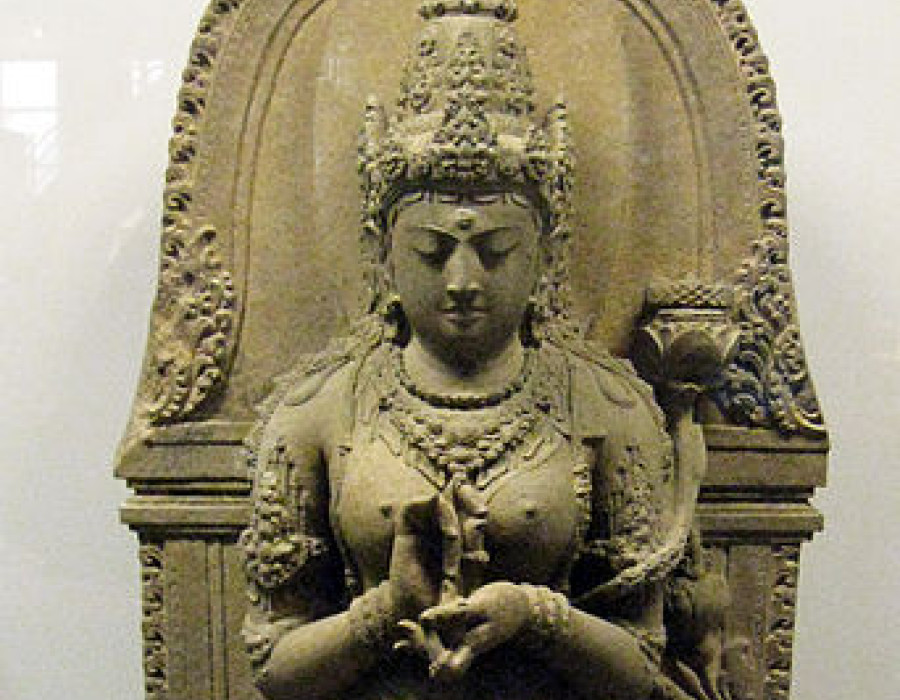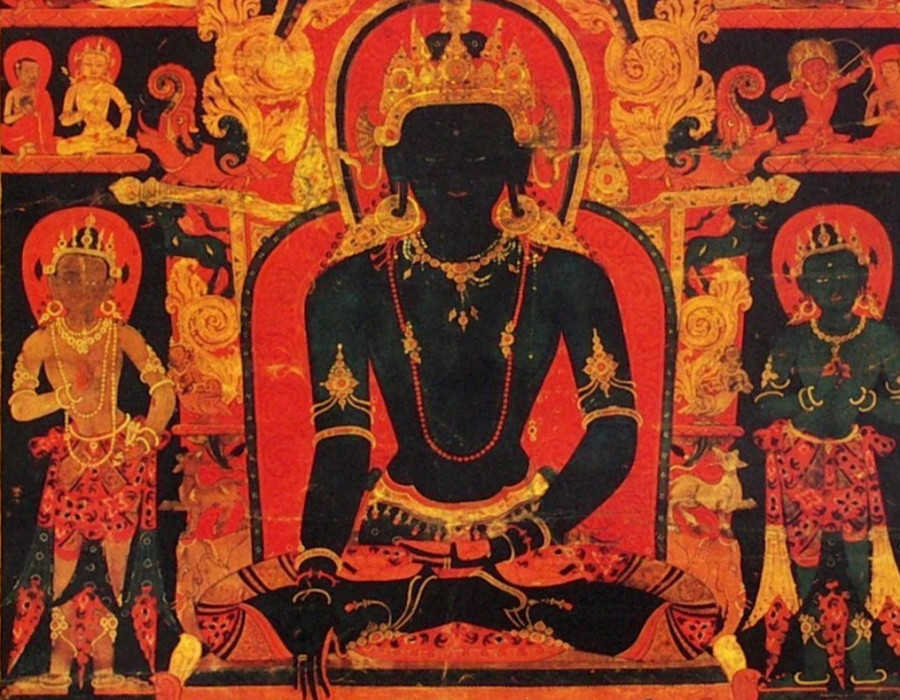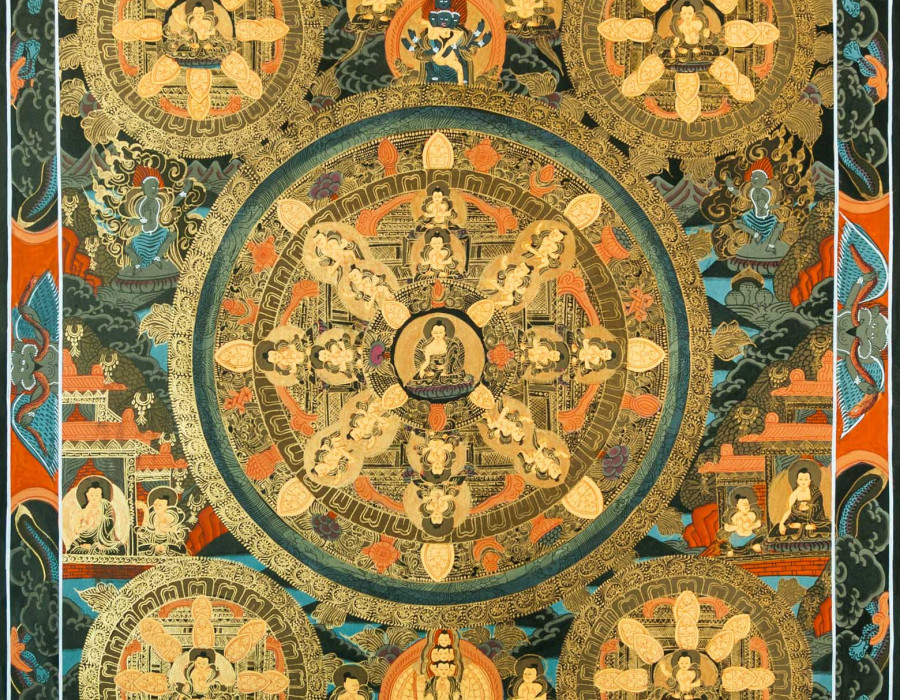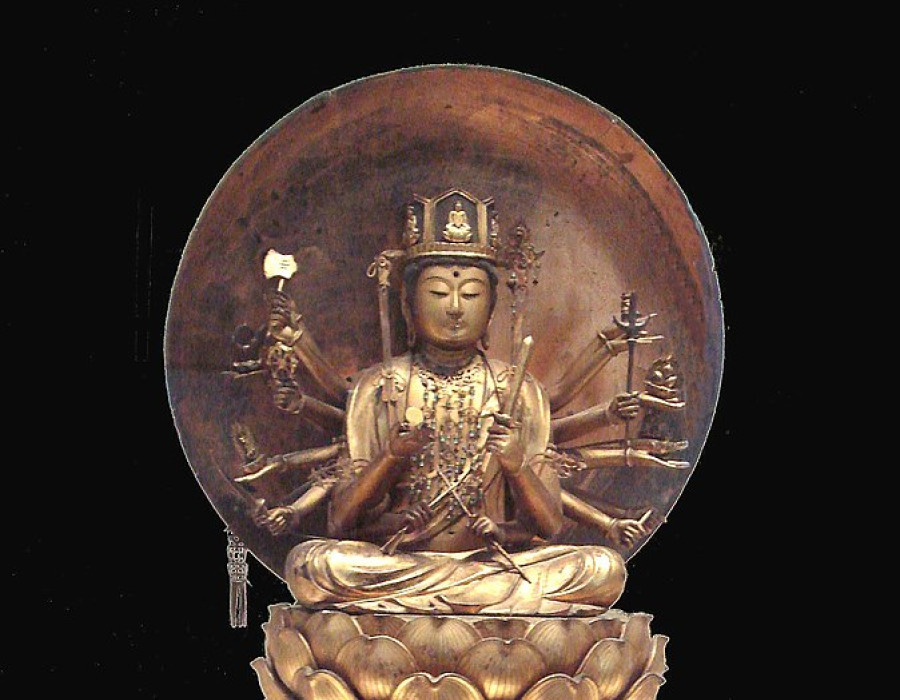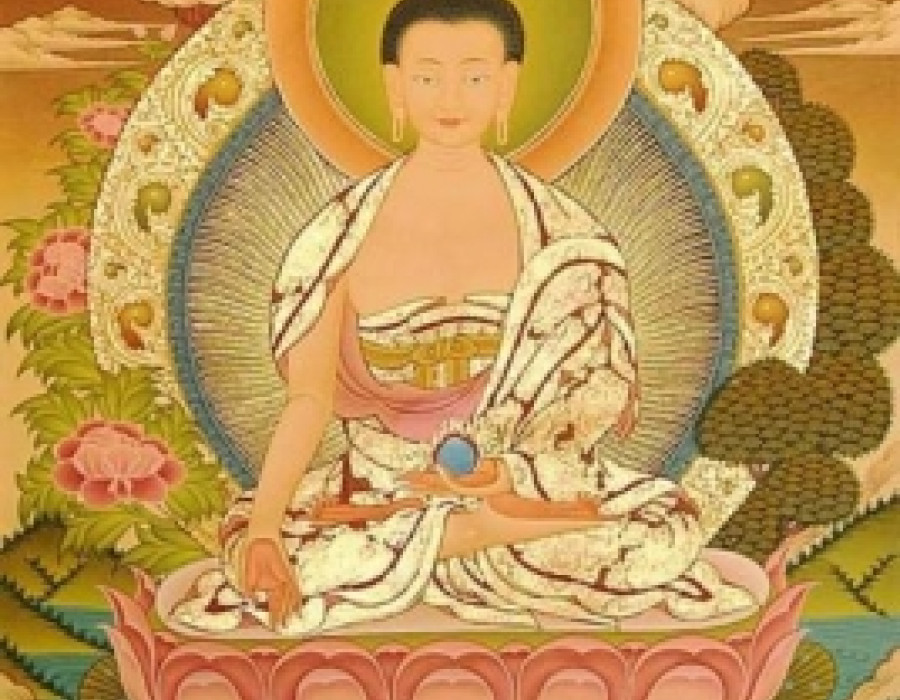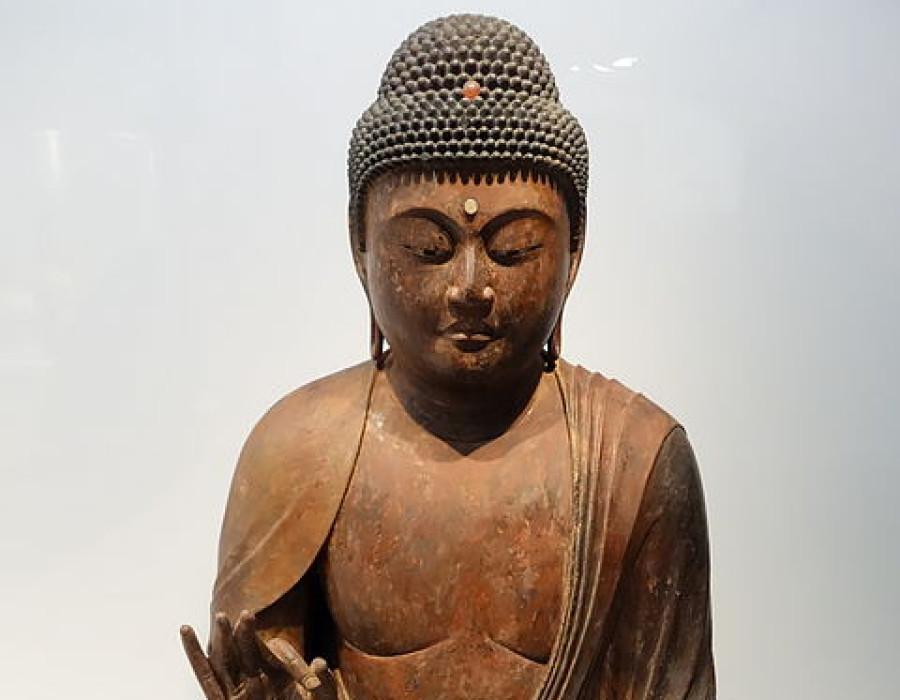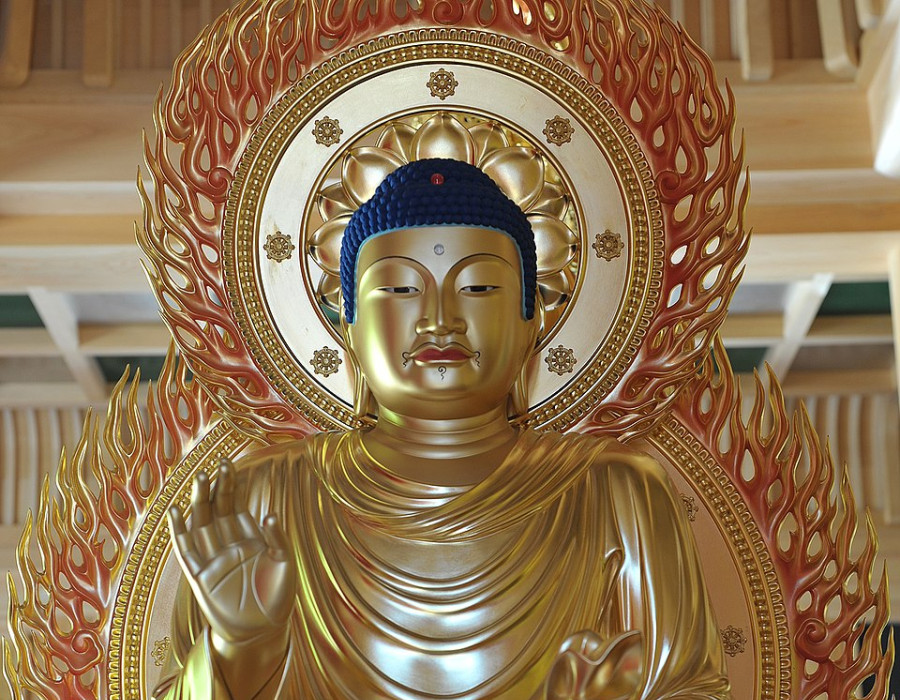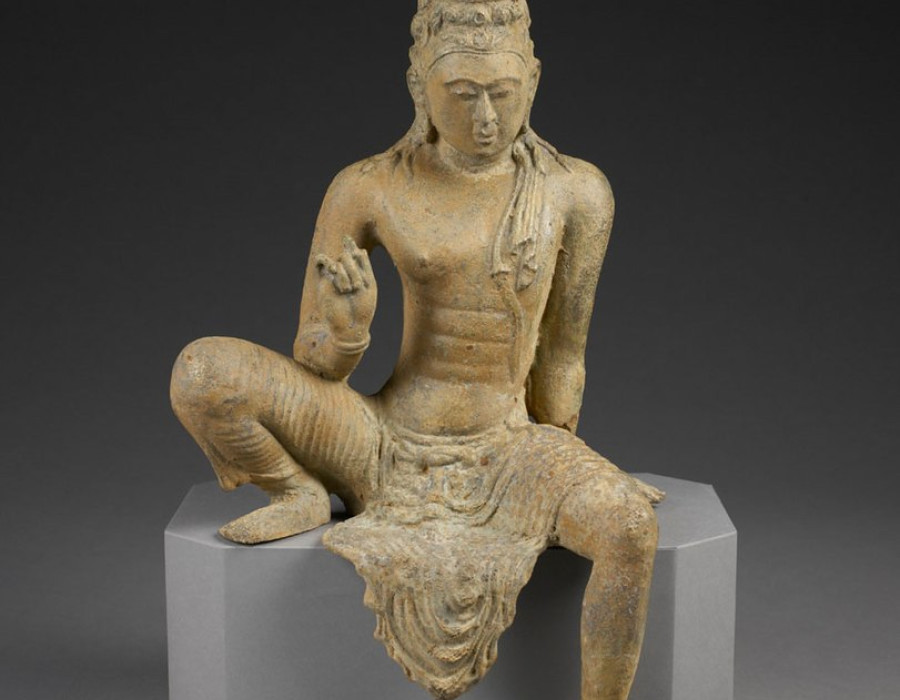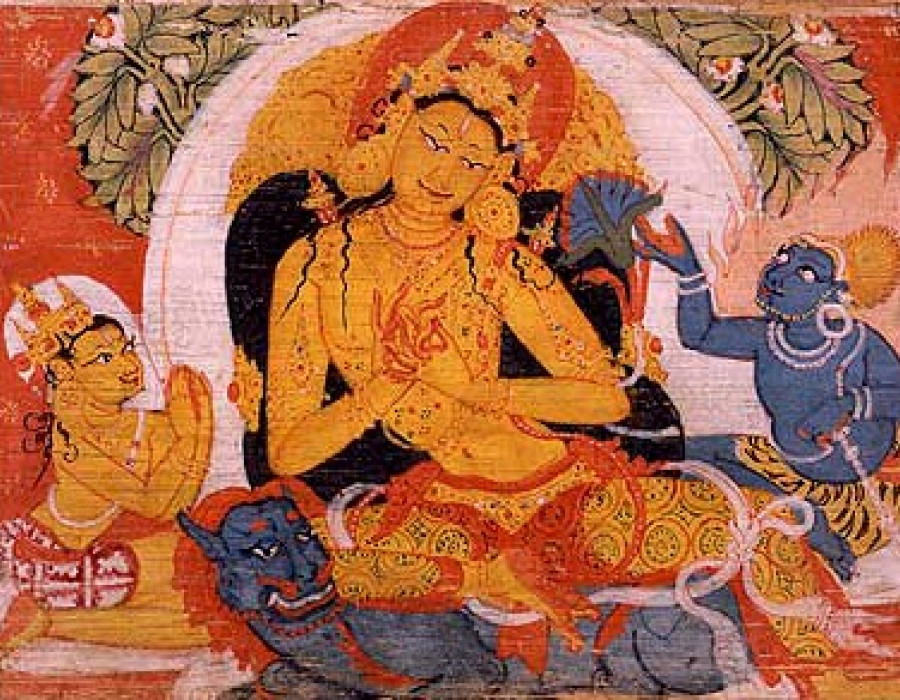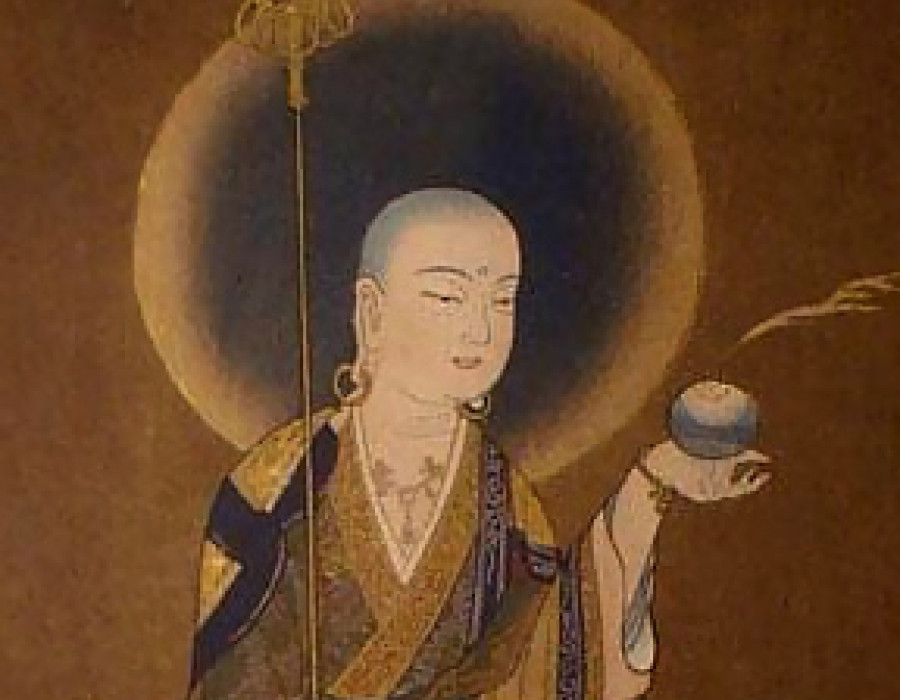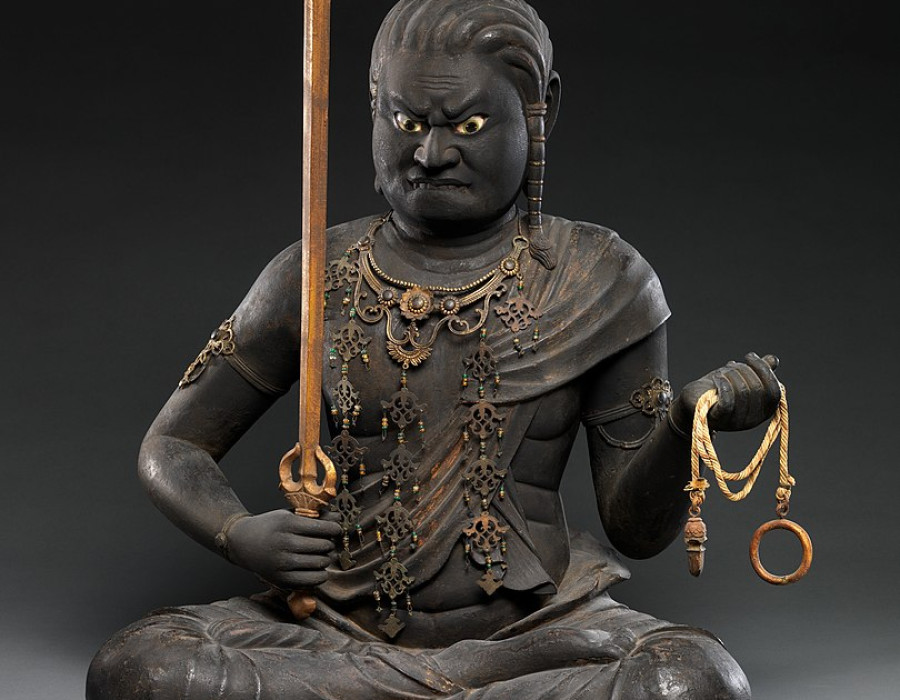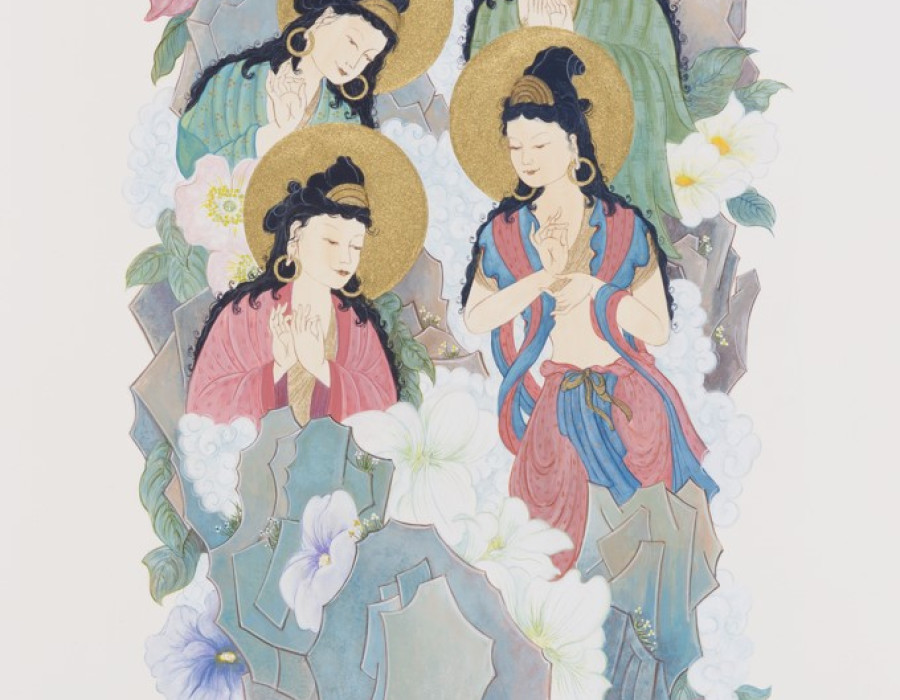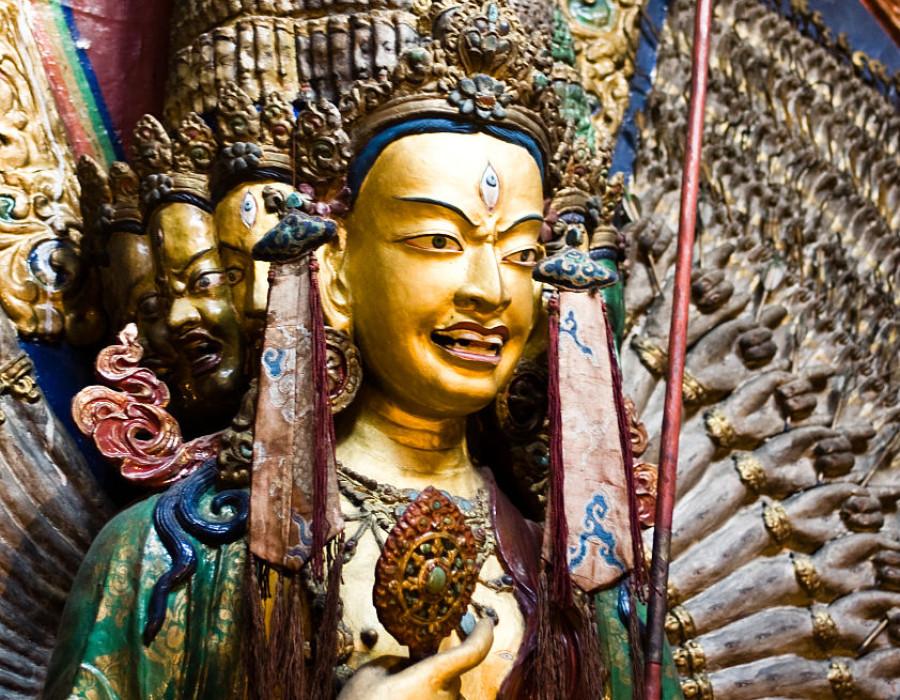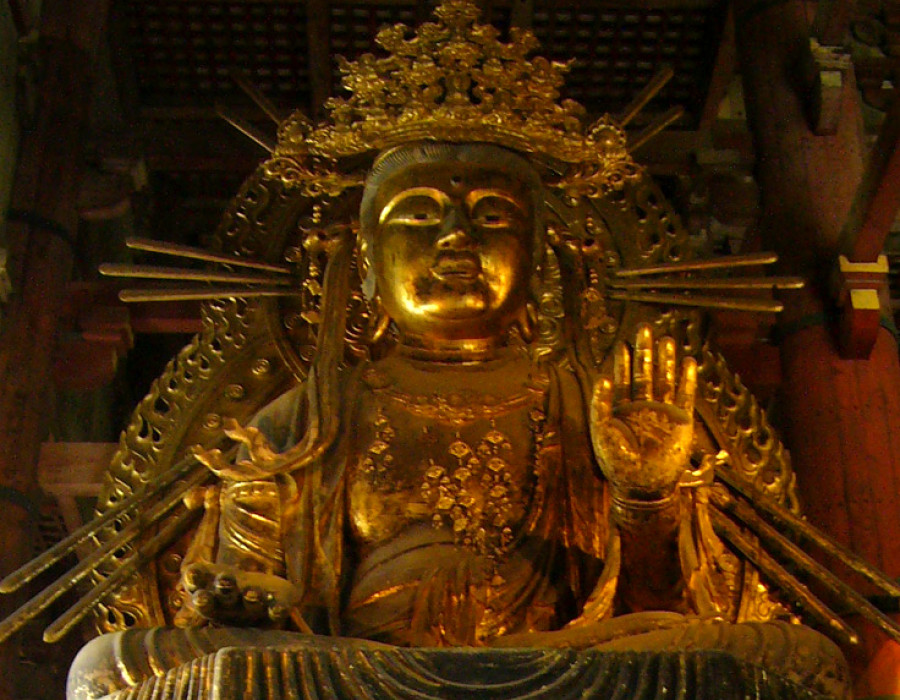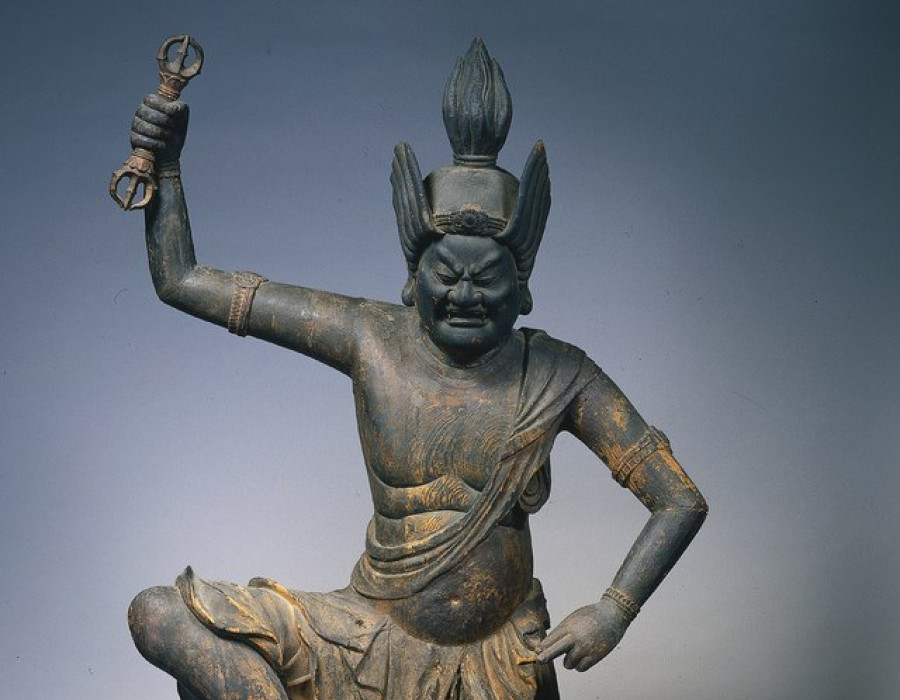
Martin Goodson
Sitātapatrā
The Way of Devotion
If protection or general healing is what you need, Sitatapatra is the Boddhisatva to call upon. Born from the top knot of the Buddha she represents the heart-mind in it’s highest state.

Statue of Sitatapatra. Leh, Ladakh.
If protection or general healing is what you need, Sitatapatra is the Bodhisatva to call upon. Born from the top knot of the Buddha she represents the heart-mind in it’s highest state.
Although the Zen school subscribes to no particular sutra, there are a number of Mahayana sutras that were popular with Chinese Chan and Japanese Zen.
One such is the Śūraṅgama Sūtra, known in English as the Sutra of Heroic Progess or its longer title, The Samadhi of Heroic Progress. This sutra is influenced by teachings from the Yogacara (Storehouse consciousness) and teachings on Buddha-nature. It is also influential in Tibetan Vajrayana schools. It is likely that this sutra was a Chinese composition from 8th century.
This sutra, among many other stories, tells of a female bodhisattva called Sitātapatrā, originally a female deity whose name translates as White Parasol.
According to legend, Sitātapatrā emerged from the Buddha’s top-knot as he was sojourning in the 33rd heaven, which is the place where the next Buddha-in-waiting Maitreya lives prior to his final rebirth. Thus, Sitātapatrā represents the Mind/Heart in its highest state. The white colour is suggestive of the base of the Storehouse consciousness which is without defilements, and is thus suggestive of the fully enlightened state which exists eternally beyond the mirage of everyday existence.
The parasol represents protection since a parasol protects against the heat of the sun. Thus, she is called upon to protect beings who need rescuing from demons or attack from spiritual forces that cause suffering.
Iconographically, she is multi-limbed and multi-headed which brings to mind her relationship as the female counterpart to Bodhisattva Avalokiteśvara, the Compassionate One.

Ushnisha-Sitata-Patra - Brooklyn Museum
The parasol, as a symbol, also appears in another sutra popular in the Zen school, the Vimalakirti sutra. In this story 500 parasols are laid down at the feet of the Buddha who transforms them into one giant parasol that reflects all the billion-world galaxies complete with their contents on its inner concave surface. In Yogacara teachings the Buddha is said to have three bodies, the most profound is called the Dharmakaya, which is the sum total of all possible existence and is posited as the ground of all being. Without this ground no existence is possible, thus this ground is known through all existence and manifestations and is the true nature of all things past, present and future in all the ten directions of space.

普宁南岩古寺
As well as protection Sitātapatrā is also called upon for general healing.
She has a number of mantras and dharanis (one given in the Śūraṅgama Sūtra that is still used today by lay practitioners), as well as a short mantra as follows:
OM SARVA TATHAGATA USHNISHA SHITATA PATRI HUM PHAT
"Her Sacred White Canopy protects us!"

